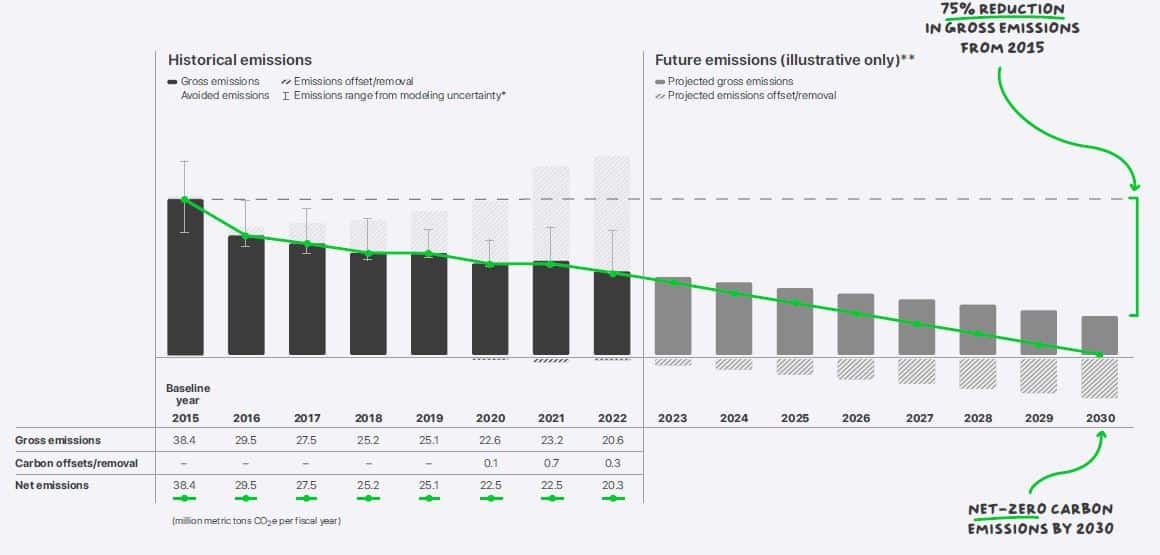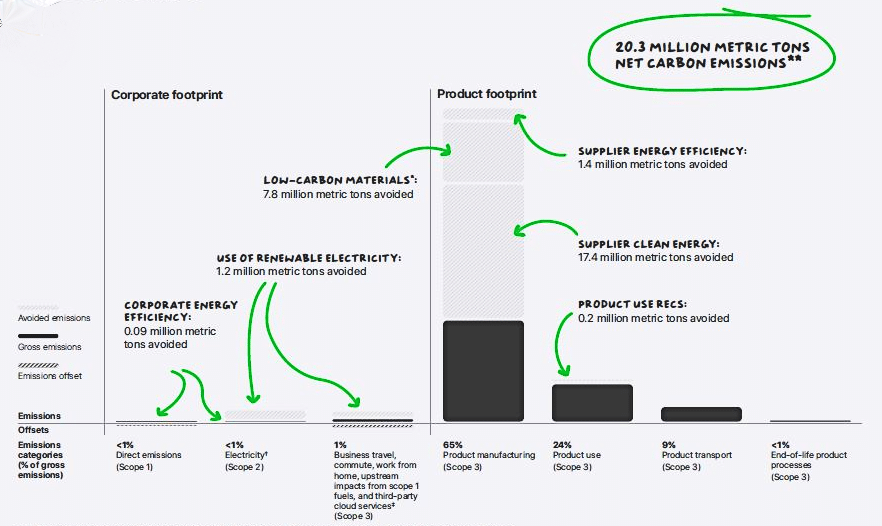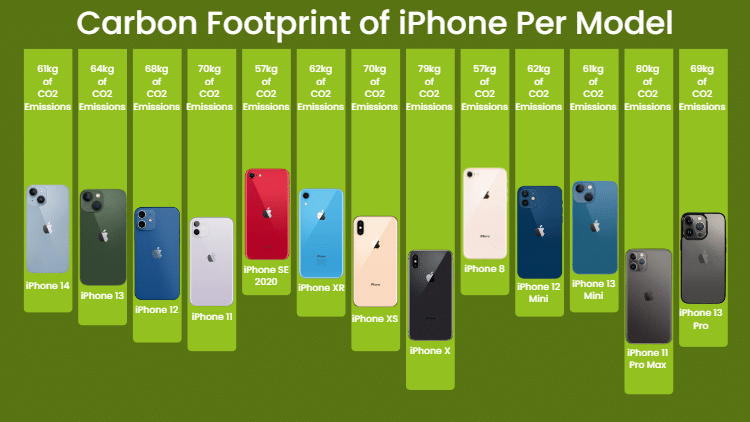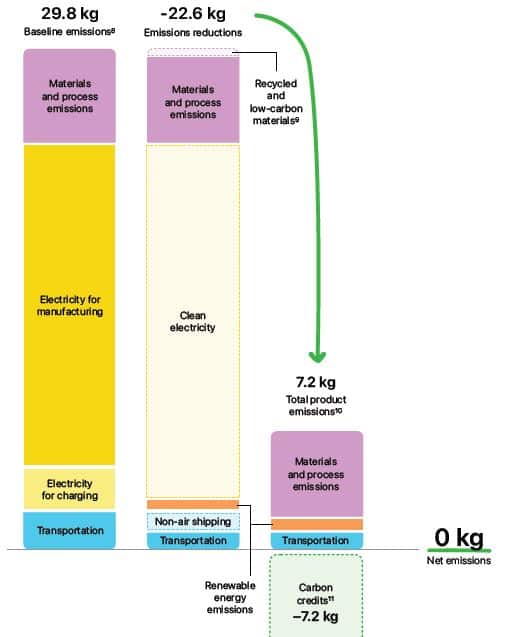Apple announced that its all-new Watch Series 9 marks its first-ever carbon neutral product, representing the iPhone maker’s giant step towards its ambitious goal of meeting carbon neutrality by 2030.
Apple’s carbon emissions reduction strategy focuses on three key areas: electricity, materials, and transportation.
The tech giant underlines the importance of reducing emissions within these sectors before using high-quality carbon credits from nature-based projects to offset any remaining emissions.
Apple’s Decade-Long Journey to 2030 Carbon Neutrality
Apple’s path to carbon neutrality began over a decade ago and has since achieved significant milestones. In 2020, the company attained carbon neutrality for its global corporate operations and announced the Apple 2030 strategy, aiming for carbon neutrality or net zero carbon across its entire value chain by 2030.
Achieving carbon neutral corporate operations involves the use of 324,100 metric tons (Mt) CO2e of carbon removal credits.
The company’s 2030 strategy revolves around a 75% reduction in overall carbon emissions from 2015 levels. And Apple has already reduced total emissions by more than 45% while simultaneously increasing revenue by over 65%.
Apple Net Zero Emissions Roadmap

The Apple Watch lineup reduces product emissions by over 75% for each carbon-neutral watch. These watches were selected based on strict criteria, including the following:
- 100% clean electricity for manufacturing and product usage.
- 30% recycled or renewable material by weight.
- At least 50% of shipping is without air transportation.

Only after implementing those carbon reduction efforts does Apple resort to offset residual emissions through high-quality carbon credits, ultimately achieving a carbon-neutral product footprint.
The Carbon Footprint of Apple Watch SE paired with Sport Loop
In the case of Apple Watch SE paired with Sport Loop, the remaining 7.2kg of carbon emissions were offset with carbon removal credits. These carbon offsets are from Apple’s nature-based solutions through its Restore Fund program. The company expanded this program by doubling its investment up to $200 million in April this year.
How About The Other Products?
Though revealing the carbon neutrality of Apple Watch is something, the company seeks to achieve the same for all its products by 2030. That means including emissions of other Apple watches, iPhones, iPad, iPod, MacBook, and more.
Considering that Apple Watch SE has the least carbon footprint, the company still has huge emissions to reduce and offset.

For various iPhone and iPad models, the total CO2 footprint is around 4,500 kg. This figure includes only one product per model, and Apple sells millions of each model worldwide.
According to Apple’s Environmental Report 2023, its total product life cycle emissions (Scope 3) in 2022 is >20 million Mt. To offset 25% of these emissions, the company would need over 5 million Mt of carbon removals.
Investing Heavily in Carbon Removals
Carbon removal is crucial to tackling the climate crisis and meeting global climate goals.
After massive reductions in product emissions, Apple will cover residual emissions with high-quality carbon removal credits primarily from nature-based projects. These include protecting forests and restoring grasslands and wetlands.
Apple defines high-quality carbon credits as those coming from projects that are real, additional, measurable, permanent and quantified. The tech company has been advancing carbon removal initiatives that meet those quality criteria through its Restore Fund program.
The carbon removal funding supports projects in Latin America, generating credits certified by international standards such as Verra. Other certifying organizations are the Climate, Community & Biodiversity Standards and the Forest Stewardship Council.
For the carbon neutral Apple Watch models, the carbon offsets used will come from projects that restore and protect forests in Paraguay and Brazil. This is in partnership with Arbaro Advisors and BTG Pactual Timberland Investment Group.
Apple’s commitment to environmental sustainability extends beyond carbon neutrality. The company has also made the following efforts:
- Ceased the use of leather across all its product lines;
- Introduced entirely fiber-based packaging for the new Apple Watch lineup;
- Increasingly incorporated recycled materials into iPhone production; and
- The Home app features a new tool called Grid Forecast, aiding users in selecting cleaner energy sources for electricity consumption.
Clean Energy, Sustainable Design, and Low-Carbon Materials
Apple plays a pivotal role in advocating for clean energy and supports its suppliers in transitioning to renewable power sources. The company actively invests in large-scale solar and wind projects and collaborates with manufacturing partners to promote clean energy adoption.
Currently, Apple and its global suppliers collectively support over 15 gigawatts of clean energy worldwide, sufficient to power over 5 million American homes.
Apple’s Supplier Clean Energy Program, joined by 300+ suppliers, commits to 100% renewable electricity for Apple production by 2030.
Moreover, Apple designs products with sustainability at their core, incorporating recycled materials into their creation. The company is phasing out leather in favor of FineWoven, a textile made from 68% post-consumer recycled content. The company also aims to use 100% recycled metals in key components by 2025.
Looking Beyond 2030
Beyond its carbon neutrality goals, Apple also commits to supporting broader efforts to decarbonize shipping industries and identifying pathways for developing sustainable aviation fuels. The company also supports other innovations such as alternative fuels and electric vehicles.
Apple’s commitment to a 90% reduction in emissions by 2050 underscores the company’s role in the fight against climate change. Apple advocates for collective action, urging governments, businesses, and individuals to join forces in accelerating progress toward a sustainable future.


